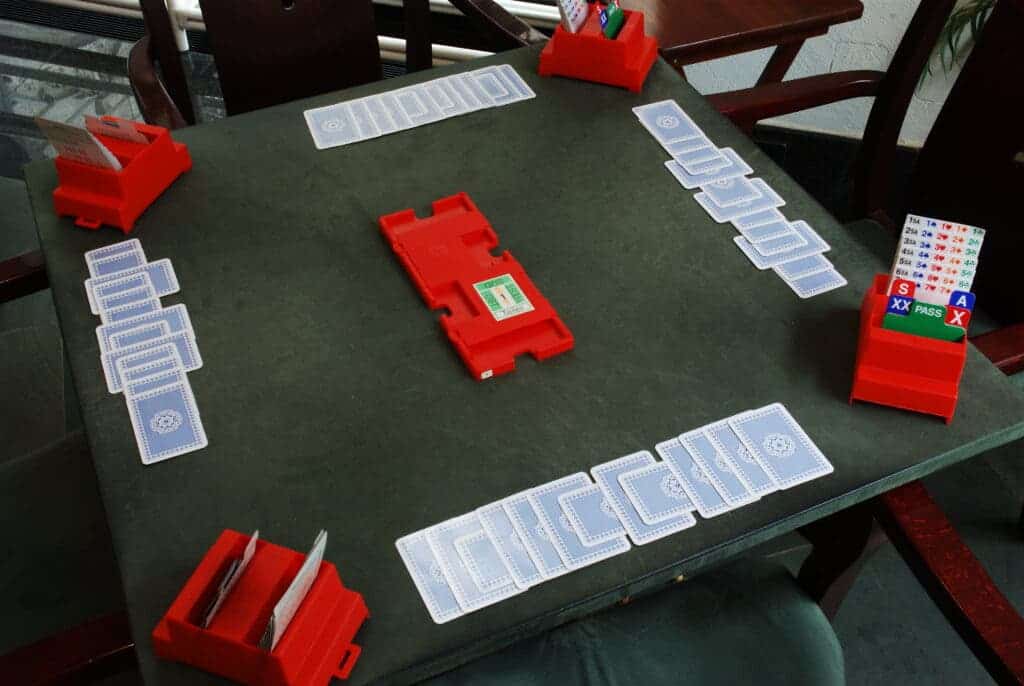Bridge, a card game played on partnerships, has long resisted attempts of computer mastery. But now, it seems that a new AI has managed to overcome human performance, and unlike other AIs, its decisions are not a black box.

In 1997, Deep Blue (a non-human chess player) managed to defeat Garry Kasparov, marking a pivotal moment in computer research: computers had overcome humans in the game of chess. Since then, computers have become way better, and have not only surpassed the sum of human chess knowledge but are even making their own contributions to the game. The game of Go, trillions of trillions of times more complex than chess, was also surprisingly mastered by AI.
But unlike chess and Go, bridge is a game of imperfect information, and AIs don’t really “like” this type of game.
In its basic format, bridge is played by four players in two competing partnerships. The whole card deck is split equally between the four players, and partners sit at opposite sides of the tables, bidding for a winning contract, and then playing their entire hand turn after turn. Unlike many other card games, bridge doesn’t have a major luck component: in competitions, players at different tables play the same set of cards, so even if you’re dealt a bad hand, you’re comparing yourself to players at other tables with the same bad hand.
For AIs, not knowing who has which cards is a big problem, but several groups are working on it — including NukkAI. NukkAI has been working on cracking bridge for some time, and they launched a challenge that required human champions to play 800 deals, divided into 80 sets of 10. The bidding part was not used, all players (including the AI) started from a predetermined contract and just played out the hands.
Each champion and the AI played against a pair of robot opponents — the best robot opponents in the world to date, but which are still not as good as human experts. It wasn’t a perfect experiment, but it’s as good as you can get; and in this experiment the AI won. NooK, as the AI was called, won 67 of the 80 sets.

It should be said that this focused only on one part of the bridge trick game. When one partnership wins the bidding stage, one of the two partners becomes the “dummy”, and puts his cards visible for everyone to see — and their partner then plays with both their own hand (which is still hidden) and the dummy’s hand (which is visible to all). This is easier because there’s less hidden information, it’s likely that AIs would have a tougher job not being on the declaring side (the one that won at the bidding stage).
Jean-Baptiste Fantun, co-founder of NukkAI, said he was confident Nook would perform better than the best human players under these conditions. AI researcher Véronique Ventos, NukkAI’s other co-founder, says Nook is a new type of AI.
Previously, AIs that mastered Go and chess were “black box” algorithms, where the algorithm is unable to explain to humans why it’s making some decisions. Top chess players routinely train with chess AIs, and while the machine suggests a move as the best, it’s incapable of saying why it’s the best move. But with bridge, it doesn’t really work like that. The game itself relies on communication between partners, and so Nook had to be a “white box” that communicates its decisions, the co-founders explain.
Rather than playing countless rounds of a game and learning by trial and error, NukkAi tries to first learn the game’s rules and then carefully improve to practice, using both deep learning systems and a rules-based approach. It’s a way that’s closer to how humans learn, and through this approach, the AI decisions are legible to others. This could make this test far more important than just winning at bridge.
If we want AIs to help us make important decisions in things like healthcare or economics, we absolutely need to understand why the AI says something is the best option — having everything under a black box will just not do. We’re already seeing AIs move from games to real-world applications, and being able to understand the algorithm’s decision process can make a world of a difference for real-life applications.
You can watch the entire game here (commentary in French).



